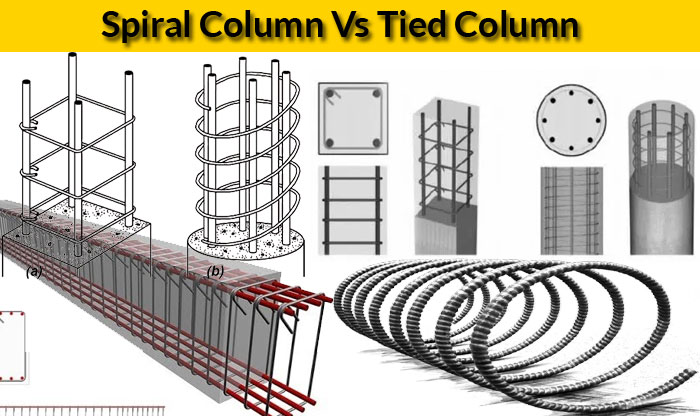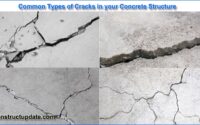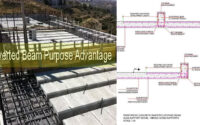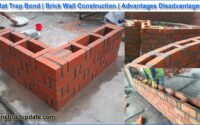Spiral Column Vs Tied Column | What is Tied Column | What is Spiral Column
Learn what are differences between the Spiral column and the Tied column. Spiral Column Vs Tied column.
One of the most significant sections of the structure is the column. The column’s primary role is to convey the entire structure’s load to the subterranean strata. The structure’s axial compressive loads are supported by columns.
The spirally and tied reinforced columns are divided into two categories based on how they are reinforced.
The difference between a tied column and a spiral column is explained below.

SPIRAL COLUMN
Spiral columns have a cylindrical structure with continuous spiral bars wrapping around the entire column.
The helical or spiral reinforcement employed in the spiral column is also known as helical or spiral reinforcement. The Support in the transverse direction is aided by spiral reinforcing.
The spiral constrains the concrete’s lateral expansion in the case of a spiral column. Spiral columns are used when ductility is critical or when large loads make it cost-effective to use the greater strength.
Spiral columns use spirals to keep the primary longitudinal reinforcement in place and increase the ductility of the column before it fails.
The spiral columns exhibit pronounced yielding, followed by distortion, before failing completely.
Spiral columns provide warnings before they fail, allowing preventative steps to be performed.
Spiral columns use spirals to keep the primary longitudinal reinforcement in place and increase the ductility of the column before it fails.
The spiral columns exhibit pronounced yielding, followed by distortion, before failing completely.
Spiral columns provide warnings before they fail, allowing preventative steps to be performed.
TIED COLUMN
The longitudinal reinforcement of a tied column is linked together with distinct smaller diameter transverse bars, also known as ties, at a specific interval along with the column height.
The concrete fails by crushing and shearing outward in the case of a tied column. The longitudinal steel bars buckle outward between the ties, causing the column to collapse quickly.
The primary purpose of the ties is to keep the longitudinal bars vertical during construction. It also contributes to the column’s stability and resistance to buckling.
The tied column refers to reinforcement that comes in the form of type. Steel ties provide stability to the main longitudinal bars in the columns in tied columns. Ties are usually positioned evenly across the column’s height.
Why can a spiral column bear more weight than a tied column?
Spiral-reinforced concrete columns may handle higher loads than tied concrete columns. This occurs because spirally reinforced columns have superior toughness and ductility than ties-reinforced columns when load eccentricities are minor.
As a result, civil engineering experts are encouraged to use spiral reinforcement instead of ties in reinforced concrete columns whenever practical.




